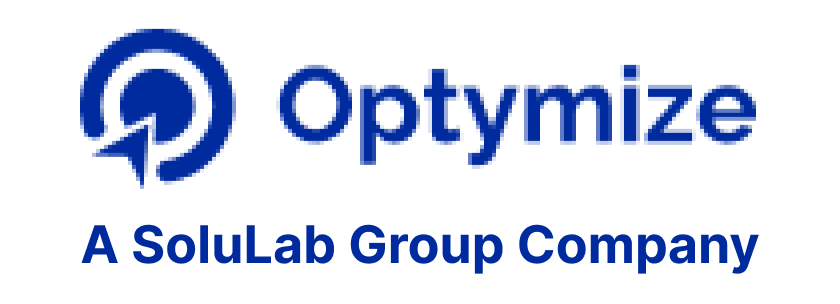Enterprises rely on optimal solutions that maximize their profits with minimal compromises. Recruitment ROI is one of those solutions that offer maximum profits from the recruited hires.
But how do we calculate this ROI? What is a good ROI? How is ROI Measured When It Comes To Recruitment? And how can we maximize the benefits from the potential hires?
If you want answers to these questions, then follow the article.
What is ROI In Recruitment?
ROI meaning in recruitment is the return on investment(ROI) that measures the performance, efficiency, and affordability of recruited hires.
In other words, we can say it’s the value generation of your workforce against their expenses or cost. It can also be defined as the investment over recruited hires divided by the actual spending on recruiting and retaining hires.
A good ROI is considered seven or greater, which reflects how much a company optimizes its core recruitment practices.
Recruitment ROI is crucial and helps companies spend on their expenses wisely. This practice has been used for years to maximize profits while using company resources efficiently.
Why Do We Need Recruitment ROI
1. Flexibility to Scale
To operate with the volatile economic changes, IT firms need an effective solution to strategies for their recruitments.
For instance, COVID affected each IT firm differently. Some were experiencing high demand for employees, while some introduced mass layoffs. Many had a ton of projects with a low workforce, while many with a huge workforce didn’t get projects.
Whether it’s a financial or a pandemic, any uncertainty can affect the global IT market. Hence, in these situations, you may want to calculate recruitment ROI and strategies for recruitment to scale your workforce wisely and save every penny to ensure your company’s survival.
2. To Evaluate Values
Recruitment is an essential practice to keep your company up and running. However, evaluating the value of hires is equally important to retain top talents without blowing a hole in finances.
The value of the hires to the company and how much it spends on hiring and retaining them give accurate insights into whether the hires can upscale profits.
Accordingly, a company can assess their need and value to make the right decision.
3. Benefits of Recruitment ROI
Recruitment ROI offers various benefits other than just helping achieve milestones. That’s why we have listed some of the benefits of recruitment ROI that you should check out.
4. Helps in Identifying Improvement Areas
Recruitment ROI has been serving industries by providing insightful data to resolve key issues in the recruitment process.
It helps companies identify possible areas of improvement, such as improving their ability to assess quality hires. It can be done using the “Quality to Hire” parameter, which helps generate reports on the quality of hires and try to improve it by introducing practical-based assessments such as customized coding tests or level-based assessments.
5. Improve Recruitment Process
Recruitment ROI addresses the common issues in every recruitment practice, such as lengthy and tedious recruitment, false vetting, etc., which give applicants a bad experience that downgrades the company’s image.
With the help of its metrics, a company can collect insightful data, analyze it and use effective strategies to improve the recruitment process.
6. Use Resources Efficiently
ROI of recruitment process allows companies to efficiently use resources such as the workforce required to recruit quality hires, recruitment marketing, etc.
This turns out to be beneficial for companies as they can use these resources to cover other areas of operations, which further increases efficiency and cuts down on additional costs.
7. Ensures Maximum Return on Investment
Recruitment ROI heavily focuses on maximizing return on investment to ensure the bright future of the company.
It optimizes each process in recruitment to ensure that it only provides a quality hire who can greatly contribute to the company’s success and maximize its benefits.
Moreover, return on investment staffing allows companies to enhance their staffing operations to maintain high agility.
How To Measure Recruitment ROI
After reading these benefits you may be wondering How Is ROI Measured When It Comes To Recruitment?
The recruitment ROI is mainly the value generation of hire for a company divided by the cost of hiring and retaining that hire.
The following are some of the metrics that you should focus on to measure the recruitment ROI:
1. Determine First Year Attrition Rate
This is the first step in how to calculate ROI on new hires. The first year of attrition is the key parameter that provides valuable insights into the first impression of the candidate and the company.
The new hires who quit their jobs within a year drastically affect companies’ finances. This is known as “unmanaged attrition.”
Poor company culture, a toxic work environment, and below-average compensation are the reasons behind the high FYA rate. So If you have a high FYA rate or more than average, then it means you need to improve on your company culture and other regulated operations.
Whereas if a company terminates an employee within a year due to its un-effectiveness and poor performance, it’s known as “managed attrition.”
2. Calculate Cost Per Hire
The cost per hire is determined by the total recruitment cost divided by the total number of hires.
However, the costs can be divided into two parts: internal and external. The internal costs are nothing but training, management, and hiring costs, whereas the external costs involve advertising, marketing, and sourcing expenses.
The cost per hire helps companies determine where they spend a huge chunk of money and what needs improvements to further cut costs without sacrificing quality recruitment practice.
3. Assess Quality to Hire
Every company demands quality hires, as they want to maximize their profits every time.
This is basically a value added by new hires with their contribution to the company for massive success as per their performance and tenure.
Hence, the quality to hire is considered to be good if the contributions of the candidates, while they are employed, are greater than their hiring costs.
The quality to hire is used to assess how much they can further benefit the organization. It helps companies to understand the quality of their recruitment process and to make decisions to further improve it.
The quality also helps to define the ideal candidate and their characteristics, by which companies can redesign their assessments and interviews to hire top talents.
4. Determine Time To Fill
The time to fill is one of the essential parameters of the recruitment ROI, which represents the time to fill the vacant position from its availability to onboarding a hire to the position.
This parameter tests an organization’s recruitment abilities, and effectiveness and allows them to make further improvements.
Moreover, it improves the recruitment plans and uses different strategies for effective recruitment.
5. Evaluate Time To Hire
The time to hire, also known as the “Time To Accept”, is a parameter that represents the time between when the company contacts a candidate regarding the vacant role and the candidate accepting the offer.
Thus, it provides some valuable insights into how well the recruitment process works and what issues need to be addressed.
The shorter time to hire serves companies with top talents, as tedious recruitment snatches away qualified professionals, which again impacts candidates’ experience and downgrades your image.
6. Look into Offer Acceptance Rate
The offer acceptance rate shows the number of applicants who accepted the job offer versus the number of applicants who received the job offer.
However, if you have a lower OAR rate, then it may be because of the below-average compensation that you offer. To avoid low OAR, the recruitment teams can discuss the compensation and perks with the candidates to assure that they accept the offer.
The OAR shows how many applicants are interested in working with your company and even provides you with some deep insights, such as whether you are offering industry-level perks or you have a good company culture.
Conclusion
Recruitment ROI is indeed necessary to drive success in organizations. It helps companies reduce their compromises and offer maximum profit. ROI of recruitment process has the potential to test every hire accurately to further determine the value of their contribution and success rate.
If you are here, then it is certainly because you want to know how to measure the recruitment ROI and maximize benefits, and this article helps in providing that very information. With this, you can analyze your recruitment process, take measures for improvements, and calculate recruitment ROI to drive success.







